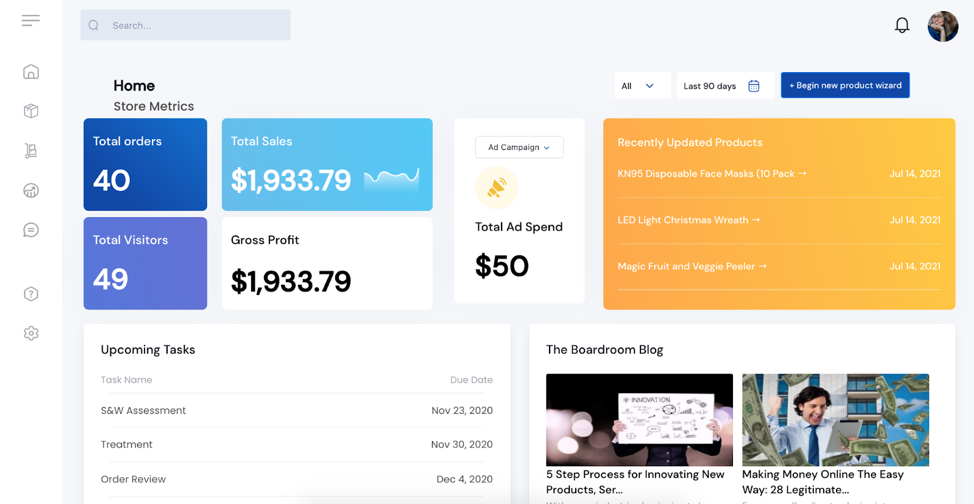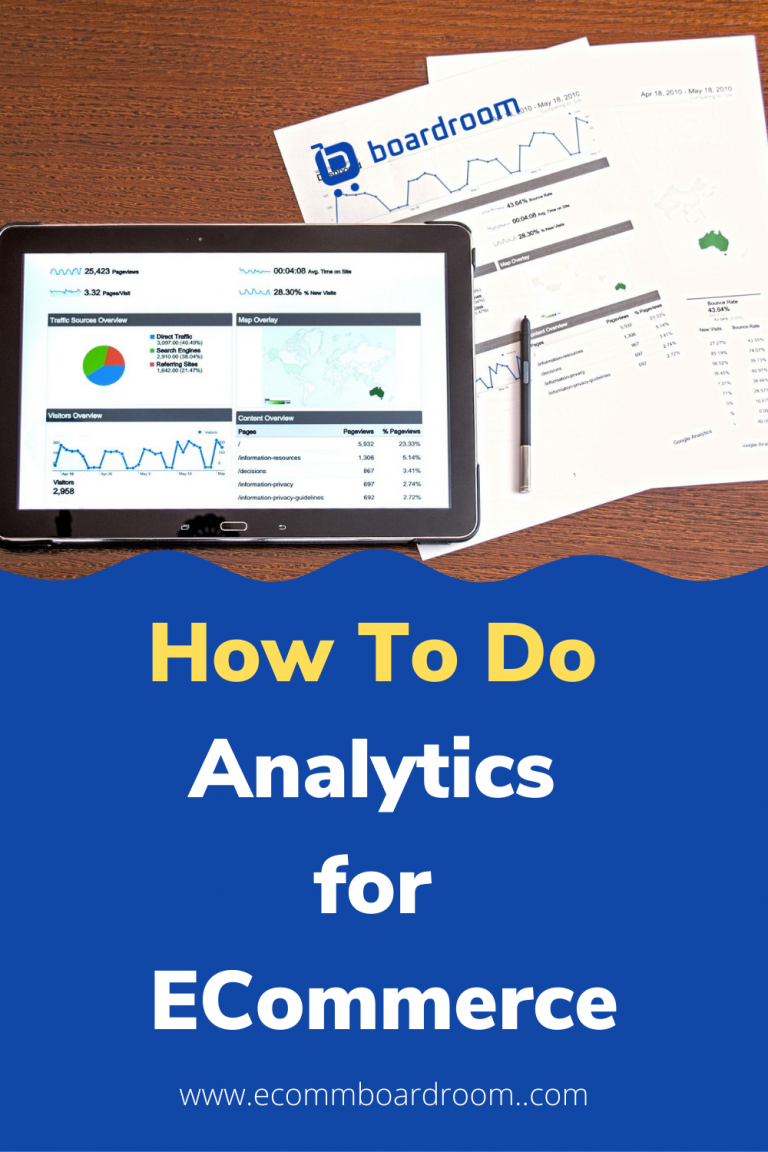Let’s talk about a problem. All e-commerce businesses know about this problem, but almost none of them solve it effectively. I’m talking about e-commerce data analytics.
First, some basic facts.
Basic Fact #1: the data matters.
When you’re analyzing a business model that enables you to cheaply get 1000s of eyeballs on your offer, you’re dealing with tiny, highly impactful percentages.
Tiny improvements to tiny percentages make huge differences in bottom line profits at scale. Raise your conversion rate by from 1% to 1.5%, an increase of a half a percent, and you’ll see 50% greater revenue.
Likewise, even a small slip in your metrics leads to a huge loss. I won’t add an example here, because it would hit too close to home (with myself).
Like I said, basically everybody already knows this. The data does matter.
Basic Fact #2: What isn’t measured, isn’t managed (as the legendary Peter Drucker said).
Obviously. You have to define success and measure whether or not you are successful. Otherwise, you’re just putting money into the magical money vending machine, and hoping that $1 turns into $2.
That’s why good, conscientious, profit-seeking e-commerce entrepreneurs make an effort to manage their metrics.
They implement conversion rate optimization techniques, testing new products, designs, landing pages, copy, CTAs, ad placements, and targeting. And they measure the impact of those implementations in the form of Key Performance Indicators.
To sum it up? They analyze their data.
Here’s the problem
As any solopreneur or small business owner knows, this exercise of data management causes a huge headache.
Why?
Well, think about the way you manage your e-commerce business.
You might do product research with Jungle Scout’s Niche Hunter, or Trend Hunter, or Sell The Trend, or Hunt The Jungle Nich Trend, or whatever.
You definitely have an e-commerce platform. Whether you use Amazon Seller Central, Shopify, WooCommerce, or one of 1000 other similar tools, you have to sell your products somewhere.
You probably have some sort of supplier relationship, be it dropshipping or manufacturing.
You might store some inventory, and you definitely have to worry about getting your products delivered to your customers.
And of course, you probably use 11 tools to market your business via social media, PPC, SEO, email marketing, automation tools, etc etc.
What’s my point?
All of these pieces of the e-commerce puzzle…they by definition involve different software systems.
And therefore they produce little bits and pieces of the data that collectively tells the whole story of your business’ operations.
So if you’re a good, conscientious, profit-seeking e-commerce entrepreneur, you’ve realized by now that you will have to go to each one of these tools individually to calculate your holistic metrics.
Do you download CSV files? Merge everything into one Excel spreadsheet (OK, Google Sheet)? Just jot down the most important figures on a napkin and hope you don’t lose it?
Here’s a question. What’s your net profit for this month? I mean after you’ve counted up all the ads, fiverr gigs, subscription fees you pay, payment processing fees – everything.
What’s your net profit for the last week?
How about just for today?
Most e-comm business owners can’t honestly answer that question in under an hour.
Yeah, that’s a problem
If you’re like most of us, you’re probably getting sick and tired of even reading about e-commerce data analytics, let alone actually DOING this exercise manually.
Probably, if you’ve scaled past 6-figures, you have some imperfect process in place.
Maybe you use Quickbooks (which has no e-commerce-focused metrics), or hire a VA to do the spreadsheet work for you (which is not on-demand and very error-prone).
But whether you think you have it figured out, or your eyes are being opened to this problem for the very first time, let me ask you something:
Shouldn’t there be a better way?
This is the way I do e-commerce data analytics
That was my thought process over a year ago, when I got absolutely sick and tired of working out of a google sheet to calculate my net profit once per month.
I love data. Nerdy, but true. I’ve always been a “numbers guy.” It’s part of what makes e-commerce fun for me.
But after months of the manual slog, I started craving automation.
I imagined this single dashboard that syncs all my data and calculates Net Profit for me on demand.
Why stop there? I thought.
May as well calculate other important metrics like CPA, Conversion Rate, Acquisition Source, Traffic, ROAS, Campaign ROI, etc etc.
Now that would be a cool dashboard, my inner monologue mused.
So, I built it.
Introducing: Boardroom E-Commerce Data Analytics

Boardroom is the first e-commerce analytics platform designed for businesses of all sizes. If you’re just starting out, the numbers may not feel that important to you.
I promise that as you grow, they will.
But you don’t have to wait until you find success to start focusing on the metrics. In fact, I believe that you will give yourself a much greater chance of success if you start early.
So, at the entry level, Boardroom is free. As you grow, and so does the size of your data, then we’ll talk about money.
And if you are running a successful brand already, I hope you’ll find that the price is negligible compared with the value added.
Using Boardroom’s data visualization tools and recommendations, you’ll get valuable insights when you connect your Sales Channels with your accounts for Google Ads, Facebook Business Manager, Google Analytics, fulfillment service accounts, and more.
But why is it called Boardroom?
I love e-commerce. It’s absolutely flattened the playing field for what it means to be an entrepreneur.
There is greater parity of information, resources, and opportunities than in any other business model on the planet. From our living rooms, we can all become executives, of a sort, of a business that we create ourselves. E-Commerce Executives.
Soap box, dismounted. Back to the point.
In any big corporation, the biggest and most important decisions are made in one place: The Boardroom.
In the new world of e-commerce, our headquarters are digital. But we still need a place to make those big decisions.
My hope is that Boardroom becomes that place for you.
Thanks for reading. To learn more and sign up for free, click here to check out Boardroom.


